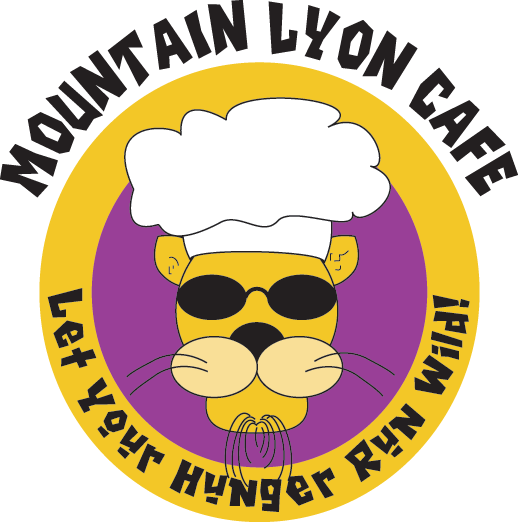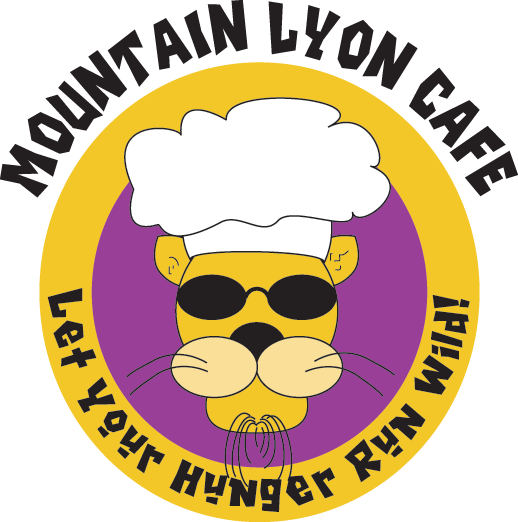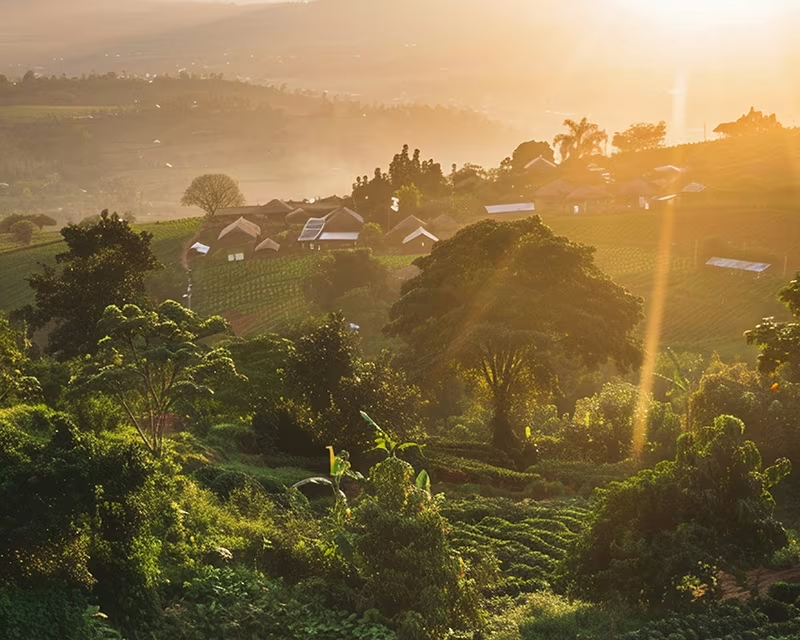Coffee is more than just a beverage in Ethiopia—it’s a story, a ceremony, a cultural heritage, and a symbol of hospitality. Known globally as “Ethiopia | The Birthplace of Coffee,” this East African nation offers an unparalleled journey into the origins of Arabica beans, spiritual traditions, and the evolution of a worldwide obsession. To sip Ethiopian coffee is to taste history.
The Legendary Origin of Coffee in Ethiopia
“Coffee smells like freshly ground heaven.” – Jesse Lane Adams
The journey of coffee begins with a legend that has echoed through the highlands of Ethiopia for centuries. The story of Kaldi and the dancing goats is one of the most widely told tales in the world of coffee.
Kaldi and the Dancing Goats
Around the 9th century, Kaldi, a goat herder from the Kaffa region, noticed his goats behaving strangely after nibbling on the red berries of a certain shrub. They were animated, jumping, and full of energy.
“Curious, Kaldi tried the berries himself and soon found his own senses heightened.”
Monks at a nearby monastery took interest in Kaldi’s discovery. They began to boil the berries into a drink, which helped them stay awake during long hours of prayer. And thus, the magic of coffee was born.
| Element | Detail |
|---|---|
| Discovery Site | Kaffa Highlands |
| Key Character | Kaldi the Goat Herder |
| Time Period | Circa 9th Century |
| Plant | Coffea Arabica (wild origin) |
This humble beginning laid the foundation for one of the most valuable agricultural commodities in the world.
From Myth to Global Movement
By the 15th century, coffee had reached Yemen, where Sufi monks drank it to enhance spiritual concentration. The port of Mocha (yes, that Mocha) became a trading hub for Ethiopian coffee.
The beans made their way through the Middle East, to Istanbul, Venice, and eventually Europe, where coffeehouses sprang up in cities like London and Paris, becoming epicenters for intellectual and cultural revolutions.
“A cup of coffee commits one to forty years of friendship.” — Turkish proverb
The roots remained African, but the branches of coffee stretched worldwide.
Unique Coffee Growing Regions in Ethiopia
Ethiopia is not only the cradle of coffee’s origin, it is also home to the most diverse and flavor-rich coffee profiles in the world. Each region has its own altitude, soil, climate, and traditional farming practices that contribute to the bean’s character.
Yirgacheffe: Floral and Delicate
The Yirgacheffe region, located in southern Ethiopia, is renowned for producing some of the world’s best washed Arabica coffees. Known for their bright acidity, floral aroma, and tea-like body, Yirgacheffe beans are a favorite among specialty coffee enthusiasts.
Tasting Notes:
- Jasmine
- Bergamot
- Lemon
- Earl Grey
The washed processing method, in which beans are fermented and rinsed, results in a clean, complex cup.
“Yirgacheffe is to coffee what Burgundy is to wine.” – Specialty Coffee Association
Sidamo: Rich and Full-Bodied
Sidamo, another southern region, offers coffees with more body and complexity. Grown at high elevations between 1,500 and 2,200 meters, Sidamo beans are often fruit-forward with sweet notes.
Tasting Notes:
- Blueberry
- Dark Chocolate
- Peach
- Brown Sugar
Sidamo’s coffees benefit from its lush environment, rich volcanic soil, and centuries-old heirloom varietals.
See more: Where to Find the Best Coffee in the World
Harrar: Wild and Bold
In the eastern highlands, Harrar coffees are naturally processed, meaning the coffee cherries are dried with the fruit still on the bean. This method imparts a bold, wine-like flavor and a heavy body.
Tasting Notes:
- Blackberry
- Cocoa
- Spice
- Tobacco
Harrar is not just a flavor—it’s a statement. The wild nature of its beans reflects the rugged, dry landscape where they grow.
| Region | Processing | Notes | Altitude |
|---|---|---|---|
| Yirgacheffe | Washed | Floral, citrus, tea-like | 1,700–2,200 m |
| Sidamo | Washed | Fruity, sweet, smooth | 1,500–2,200 m |
| Harrar | Natural | Spicy, winey, bold | 1,400–2,100 m |
These regions produce more than coffee—they create regional identities celebrated by cuppers, baristas, and roasters globally.
The Ethiopian Coffee Ceremony: A Cultural Ritual
In Ethiopia, coffee is not rushed. It is a spiritual experience, a ritual passed down from mother to daughter, neighbor to neighbor. The Ethiopian coffee ceremony is a cornerstone of social life, hospitality, and identity.
Step-by-Step Ritual Experience
The process begins with green coffee beans, which are roasted over a charcoal stove in a flat pan. The host, usually a woman in traditional dress, fans the beans as they roast, creating an aromatic prelude to the ceremony.
Roasting – Whole green beans roasted fresh in front of guests.
Grinding – Beans crushed with a mortar and pestle to a coarse powder.
Brewing – The coffee is brewed in a clay pot called a jebena.
Serving – Served in small porcelain cups (sini) without handles.
Three Rounds – Known as Abol (first), Tona (second), and Baraka (third), each round has deeper symbolic meaning.
“Buna dabo naw” – Coffee is our bread (Amharic proverb)
The ceremony is not complete without burning incense, laid-down fresh grass, and shared stories that accompany the beverage.
Tools, Setup, and Symbolism
| Tool | Purpose |
|---|---|
| Jebena | Clay coffee pot with long neck |
| Sini | Small handleless cups |
| Mukecha | Mortar for grinding coffee |
| Zenezena | Long-necked pan used to pour coffee |
| Frankincense | Burned during ceremony for aroma |
Every tool holds cultural symbolism, reflecting respect for the guest, community bonding, and Ethiopia’s reverence for coffee.
The three rounds of coffee signify transformation—from physical to spiritual nourishment.
The Global Impact of Ethiopian Coffee
The global coffee industry owes its existence to Ethiopia. Not only as the birthplace of Arabica, but also as the keeper of genetic diversity, traditional farming wisdom, and rich cultural heritage that continue to shape the future of the coffee world.
Introduction of Arabica to the World
Coffea arabica originated in the forests of southwestern Ethiopia. It was Ethiopian farmers who first cultivated it, using heirloom varietals passed down for generations. These beans then traveled through:
Yemen: Home to early coffee cultivation
Ottoman Empire: Spread to Turkey and North Africa
Venice & Vienna: The first coffeehouses of Europe
From there, coffee traveled to the Caribbean, Latin America, and Asia, forming the economic backbone of dozens of countries.
Ethiopia’s coffee forests are a living gene bank, essential for future-proofing coffee against climate threats.
Ethiopia’s Role in Specialty Coffee
Ethiopia is not just the past of coffee—it’s also its premium future. The country remains a top exporter of specialty-grade coffees with high cupping scores and global recognition.
Cup of Excellence awards regularly go to Ethiopian lots.
Single-origin Ethiopian beans dominate the shelves of third-wave coffee shops.
Roasters such as Stumptown, Blue Bottle, and Lyoncafe (our brand) center their seasonal menus on Yirgacheffe or Sidamo selections.
“To drink coffee from Ethiopia is to sip from the roots of civilization itself.”
Coffee Tourism in Ethiopia
In a world where consumers crave authenticity, coffee tourism has become a powerful experiential trend—and Ethiopia, the birthplace of coffee, offers perhaps the most immersive journey. Here, travelers don’t just taste the bean, they follow it from soil to sip, experiencing every step through the lens of ancient tradition, community, and nature.
Visiting Coffee Farms and Markets
Imagine walking through the lush highlands of Yirgacheffe or Sidamo, breathing in the aroma of freshly turned earth and ripe cherries. Local farmers greet you with warm smiles and invite you to experience the harvest. These regions host agritourism programs where visitors can:
Harvest coffee cherries by hand with local pickers
Observe traditional processing methods, from washing to sun-drying on raised beds
Sample freshly brewed coffee in open-air huts overlooking the valleys
Markets in towns like Jimma or Dilla are treasure troves for coffee lovers. Here, you can buy:
Unroasted green beans in sacks marked with the region and farmer
Roasted blends prepared by local cooperatives
Traditional coffee-making tools, including jebenas and handmade cups
“To truly understand coffee, you must walk its path—from root to roast, from ceremony to culture.” – Coffee Traveler Journal, 2022
Experiences in Addis Ababa and Beyond
The capital, Addis Ababa, offers a modern contrast to the rural coffee farms. Yet, it too is steeped in history. Begin your journey at the National Museum of Ethiopia, where coffee artifacts from the Aksumite era are preserved. Then visit some of the city’s legendary coffeehouses:
Tomoca Coffee – A family-run roastery since 1953, known for its deep, smoky brews
Kaldi’s Coffee – Ethiopia’s local answer to Starbucks, combining tradition with modern coffee culture
Lyoncafe Pop-up Tastings – We at Lyoncafe frequently host curated tastings, storytelling sessions, and brewing workshops. Learn more at sienna-pony-277127.hostingersite.com
Adventurous travelers can venture to Bonga Forest, the true wild origin of Coffea arabica. Guided eco-tours in this UNESCO-recognized biosphere offer a unique glimpse into Ethiopia’s untamed coffee heartland.
Protecting Ethiopia’s Coffee Heritage
Ethiopia’s coffee is not just a crop—it’s a national identity and a global treasure. But modern challenges threaten its sustainability and authenticity. The country has made strategic moves to protect its legacy while empowering local farmers.
Geographical Indications and Identity
In the early 2000s, Ethiopia sought trademark rights for its prized coffee names: Yirgacheffe, Sidamo, and Harrar. A landmark dispute with Starbucks over trademark usage drew international attention.
“We are not just selling beans. We are selling our culture, our names, our identity.” — Ethiopian Coffee Exporter, 2007
With the help of NGOs and global legal experts, Ethiopia established Geographical Indication (GI) protections, much like Champagne in France or Parmigiano-Reggiano in Italy. This ensured that:
Farmers could charge premium prices
Regional names were protected from misuse
The global market recognized the authenticity of Ethiopian origin
Today, GIs empower local cooperatives and promote transparent trade.
Climate Change and Sustainability Efforts
According to a 2020 study by Kew Royal Botanic Gardens, 60% of wild coffee species face extinction due to climate change. Ethiopia’s heirloom forests, the genetic lifeline for Arabica, are under threat.
Yet, hope brews from within:
Shade-grown coffee preserves native ecosystems
Agroforestry programs reintroduce indigenous trees
Rainwater harvesting and solar drying beds are being adopted to reduce environmental impact
Organic and Fair-Trade certifications are rising, opening new markets and better margins
Lyoncafe proudly partners with sustainable co-ops in Sidamo and Guji, supporting farmers who blend tradition with resilience.
Why Ethiopia Still Matters in the Coffee World Today
In an industry increasingly dominated by high-yield hybrids and mechanized farming, Ethiopia remains a bastion of biodiversity, heritage, and soulful coffee. It’s not just history—it’s the future of premium, ethical coffee.
Modern Brands Promoting Ethiopian Beans
The global specialty coffee movement continues to be shaped by Ethiopian beans. From local startups to global giants, these brands champion the purity and provenance of Ethiopia:
| Brand | Focus | Region Featured |
|---|---|---|
| Lyoncafe | Farm-direct, storytelling-led | Sidamo, Guji |
| Blue Bottle | Seasonal single-origin | Yirgacheffe |
| Stumptown | Organic and sustainable | Ethiopia-wide |
| Onyx Coffee | Light roasts and flavor clarity | Worka, Kochere |
These companies invest in direct trade, transparency, and farmer empowerment—principles rooted in Ethiopian values.
How to Brew and Buy Authentic Ethiopian Coffee
You don’t need to fly to Addis to enjoy Ethiopian coffee—though we highly recommend it. Instead, here’s how you can bring the experience home:
Buying Tips:
Look for labels with specific region names, not just “Ethiopian”
Choose light to medium roast to highlight floral notes
Opt for washed process for a clean cup, or natural process for fruit-forward profiles
Support direct-trade or co-op certified roasters
Brewing Methods:
Pour-over (Hario V60 / Chemex) – Highlights floral and citrus clarity
French Press – Brings out body and complexity
Jebena (Traditional) – For the full Ethiopian ritual experience
“Each sip of Ethiopian coffee is like a fingerprint—unique, authentic, and never forgotten.”
Final Thoughts: Sip the Story of Coffee’s Origin
The tale of “Ethiopia | The Birthplace of Coffee” is not just about where coffee comes from—it’s about who we are when we drink it. Each cup is a window into Ethiopia’s mountains, myths, and melodies. From the mystical forests of Kaffa to the bustling cafés of Addis Ababa, Ethiopia continues to pour passion, history, and pride into every drop.

I’m Kara Chavez, and I love coffee. I like to create some of the best coffees around – espressos, lattes, macchiatos . I strive for perfection in my coffee-making skills, and I take great pride in providing a delicious cup of joe to my customers.
I’ve been working in the coffee industry for years now, and I know everything there is to know about making a perfect cup of coffee. My passion for coffee shines through in every cup that I make, and I hope that you’ll stop by soon so that I can share my love of coffee with you!

